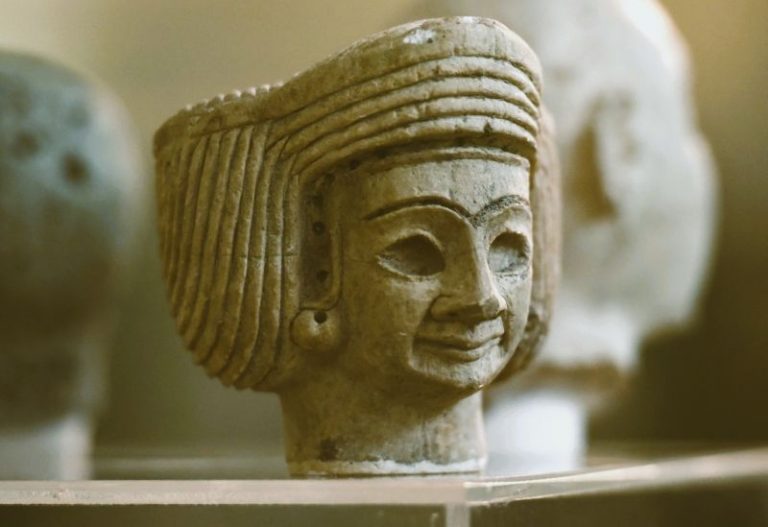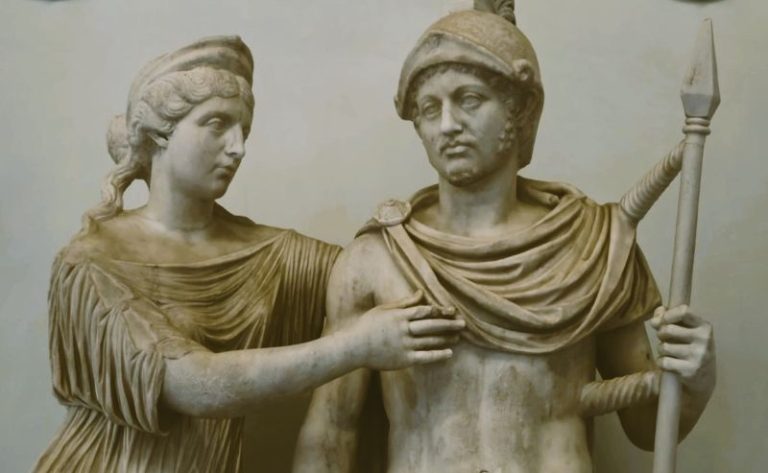

Medieval rulers confronted dissent not with a single strategy but with a spectrum of tactics that blended terror, manipulation, persuasion, and concession.

By Matthew A. McIntosh
Public Historian
Brewminate
Introduction
Medieval Europe was never as stable as the imagery of towering castles and crowned monarchs might suggest. Behind the spectacle of authority lay a constant struggle to control subjects whose grievances, whether economic, political, or religious, frequently boiled over into dissent. Kings and princes were expected to embody justice, yet when order frayed, they reached for a variety of tools to enforce submission or to negotiate survival. Brutal repression, manipulation of religious and political narratives, careful management of feudal loyalties, and occasional concessions all formed part of a ruler’s repertoire. The balance chosen depended on the scale of the uprising, the identity of the dissenters, and the ruler’s own security. The history of dissent in the Middle Ages thus offers a revealing window into the fragility of power and the lengths rulers went to preserve it.
Spectacles of Terror: Crushing Dissent Through Blood and Fear

When dissent erupted into open rebellion, rulers most often resorted to overwhelming force. Medieval authority was, at its core, military authority. Armies were raised not only to fight foreign enemies but also to crush domestic opposition.
The suppression of uprisings was accompanied by punishments designed to terrify. Rebels convicted of treason were subjected to gruesome public executions, with hanging, drawing, and quartering reserved for the most notorious leaders.1 Such spectacles reinforced the idea that rebellion was not merely a crime but a sin against both king and God. Executions were performed before large crowds, ensuring that the lesson of terror was widely absorbed.
Torture also played a central role in medieval regimes of control. Political prisoners and suspected conspirators were subjected to sanctioned brutality in order to extract confessions, implicate co-conspirators, or affirm the moral authority of the court.2 Instruments such as the rack or the strappado were as much about performance as they were about inquiry, dramatizing the futility of resistance.
Mutilation offered a less final but equally visible form of repression. Offenders might be branded, lose an ear or a hand, or be subjected to flogging and exposure in the stocks. These punishments were as much public theater as judicial sentence, marking the body as a permanent reminder of defiance and its consequences.3
The targeting of leaders was especially important. Monarchs and their advisors recognized that rebellion often depended upon charismatic figures capable of rallying discontent. Leaders of revolts were therefore singled out for the most brutal retribution, while ordinary followers might receive lighter punishments such as fines or the confiscation of property.4 By isolating ringleaders, rulers attempted to fracture solidarity and reassert control without annihilating entire communities.
Thrones and Altars: Crafting Legitimacy and Containing Dissent

If violence was the bluntest tool of authority, manipulation was its subtler counterpart. Kings understood that the legitimacy of their rule depended on narratives that rendered dissent not merely unlawful but sacrilegious.
The doctrine of divine right was central to this strategy. Monarchs insisted that their authority derived directly from God, and they often enlisted the Church to reinforce this claim. To rise against the king was not only treason but heresy, a sin against divine order itself.5 Papal bulls and episcopal sermons worked in tandem with royal proclamations, casting rebels as enemies of heaven as well as earth.
At times rulers themselves turned to scapegoats in order to preserve the sanctity of their office. During the Peasants’ Revolt of 1381, rebels declared loyalty to the young King Richard II but condemned his “evil counselors” for misguiding him. Richard skillfully used this rhetoric to his advantage, promising reform while allowing blame to fall on others. By sacrificing advisors, monarchs shielded themselves from direct accountability and preserved the aura of kingship.6
The strategy of scapegoating extended beyond officials. Political enemies could be labeled heretics or conspirators, transforming dissent into a religious or existential threat. Such labels justified persecution while rallying loyal subjects against an alleged common enemy. Here, propaganda and persecution merged, making opposition unthinkable within the dominant ideological framework.7
Preventative and Subtle Measures

Even the most ruthless rulers recognized that repression alone could not guarantee stability. Preventing rebellion often required cultivating loyalty through justice, favor, or manipulation of feudal bonds.
The ideal of the “good king” was not simply rhetorical but a real political strategy. Chronicles often contrasted just rulers with tyrannical ones, noting that kings who respected the rights of their subjects faced fewer uprisings. The revolt of the barons against King John in 1215 demonstrated the risks of neglecting this duty, as John’s disregard for customary rights created the conditions for open defiance.8
Feudalism itself functioned as a preventative mechanism. Kings distributed lands and privileges to powerful nobles in exchange for loyalty. This network of patronage resembled a “mafia-like” system, in which reciprocal obligations bound subjects to their monarch. Skillful rulers managed these relationships carefully, ensuring that loyalty was rewarded and disobedience punished swiftly. When well maintained, the system suppressed dissent before it could become open rebellion.
Resistance did not always manifest as open revolt. Peasants frequently engaged in passive forms of non-cooperation: slowing their labor, feigning illness, or concealing portions of their harvest. These small acts of defiance, though difficult to punish, were significant reminders of the limits of royal and noble power.9 Rulers could not suppress such behavior with armies; they had to accommodate or tolerate it, recognizing that rule required negotiation as well as force.
The Price of Peace: Bargains at the Edge of Rebellion

Despite the preference for repression, rulers occasionally found themselves compelled to negotiate with dissenters. Concessions, whether genuine or tactical, offered a way to defuse crises that threatened the foundations of authority.
Petitions served as one mechanism for channeling discontent. Subjects could present grievances directly to the king, and while many petitions were ignored or redirected to courts, some forced royal intervention. Such interactions reinforced the image of the king as a dispenser of justice, even as they curtailed immediate unrest.10
In more serious crises, rulers issued charters of rights or liberties. The Magna Carta, extracted from the aforementioned King John in 1215, exemplified how dissent could force a ruler into written concessions that permanently altered the political landscape. Though John repudiated the charter almost immediately, its symbolic power endured, shaping later struggles between kings and their subjects.11
Negotiation could also take ritualized or symbolic forms. In towns and cities, festive performances or ritualized demands on officials sometimes functioned as a form of negotiation, extracting resources or recognition through carefully staged dissent. Such practices blurred the line between rebellion and civic ritual, offering a socially acceptable means of voicing grievances while preserving the dignity of authority.12
Conclusion
Medieval rulers confronted dissent not with a single strategy but with a spectrum of tactics that blended terror, manipulation, persuasion, and concession. Brutal executions, mutilations, and torture dramatized the futility of rebellion, while religious and political propaganda reinforced the sanctity of rule. At the same time, rulers recognized the importance of cultivating loyalty through justice, patronage, and careful attention to grievances. When repression failed, negotiation remained a tool of survival.
The management of dissent reveals the precariousness of medieval kingship. Authority was never absolute in practice, however much it was claimed in theory. It depended on the constant balancing of fear and favor, of punishment and promise. In this balance lies the essence of medieval political life: rule was less the serene exercise of divine right than the perpetual struggle to contain disorder and reassert legitimacy.
Appendix
Footnotes
- J. G. Bellamy, The Law of Treason in England in the Later Middle Ages (Cambridge: Cambridge University Press, 1970), 77–82.
- Edward Peters, Torture (Philadelphia: University of Pennsylvania Press, 1996), 54–59.
- John G. Geltner, The Making of Medieval Antifraternalism (Philadelphia: University of Pennsylvania Press, 2012), 91.
- Steven Justice, Writing and Rebellion: England in 1381 (Berkeley: University of California Press, 1994), 138–142.
- Ernst H. Kantorowicz, The King’s Two Bodies: A Study in Mediaeval Political Theology (Princeton: Princeton University Press, 1957), 193–197.
- Justice, Writing and Rebellion, 214–218.
- R. I. Moore, The Formation of a Persecuting Society (Oxford: Blackwell, 1987), 34–39.
- Ralph Turner, King John: England’s Evil King? (Stroud: Tempus, 2005), 117–123.
- Rodney Hilton, Bond Men Made Free: Medieval Peasant Movements and the English Rising of 1381 (London: Routledge, 1973), 56–61.
- Chris Given-Wilson, The Royal Household and the King’s Affinity: Service, Politics and Finance in England, 1360–1413 (New Haven: Yale University Press, 1986), 95.
- J. C. Holt, Magna Carta (Cambridge: Cambridge University Press, 1965), 61–67.
- Miri Rubin, Corpus Christi: The Eucharist in Late Medieval Culture (Cambridge: Cambridge University Press, 1991), 204–208.
Bibliography
- Bellamy, J. G. The Law of Treason in England in the Later Middle Ages. Cambridge: Cambridge University Press, 1970.
- Geltner, John G. The Making of Medieval Antifraternalism. Philadelphia: University of Pennsylvania Press, 2012.
- Given-Wilson, Chris. The Royal Household and the King’s Affinity: Service, Politics and Finance in England, 1360–1413. New Haven: Yale University Press, 1986.
- Hilton, Rodney. Bond Men Made Free: Medieval Peasant Movements and the English Rising of 1381. London: Routledge, 1973.
- Holt, J. C. Magna Carta. Cambridge: Cambridge University Press, 1965.
- Justice, Steven. Writing and Rebellion: England in 1381. Berkeley: University of California Press, 1994.
- Kantorowicz, Ernst H. The King’s Two Bodies: A Study in Mediaeval Political Theology. Princeton: Princeton University Press, 1957.
- Moore, R. I. The Formation of a Persecuting Society. Oxford: Blackwell, 1987.
- Peters, Edward. Torture. Philadelphia: University of Pennsylvania Press, 1996.
- Rubin, Miri. Corpus Christi: The Eucharist in Late Medieval Culture. Cambridge: Cambridge University Press, 1991.
- Turner, Ralph. King John: England’s Evil King? Stroud: Tempus, 2005.
Originally published by Brewminate, 08.28.2025, under the terms of a Creative Commons Attribution-NonCommercial-NoDerivatives 4.0 International license.


